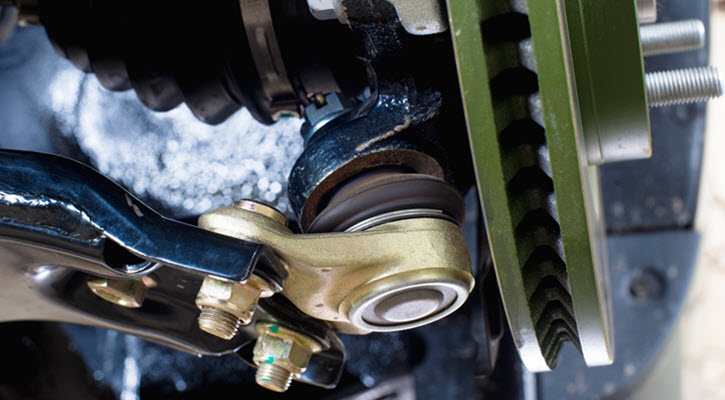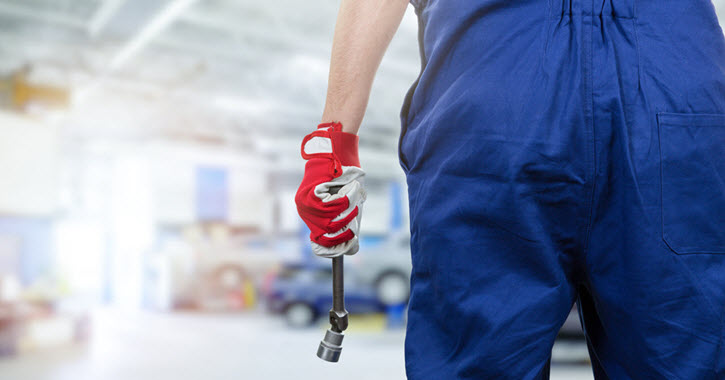
Porsche Ball Joint Failure in Santa Barbara
17 Apr, 19
When we think of possible mechanical issues in regards to our vehicles, we often think of the parts under the hood. However, there are a variety of other vital components that keep our vehicles moving that are potentially prone to malfunction and failure. One aspect we often don’t think about is the ball joints. While they may seem like a very simple part of your Porsche, they play a very important role in the suspension system.
Why the Ball Joints are Important
The ball joint is a moveable socket with a flexible ball that acts much like the human hip ball-and-socket components. It aids in the stability of the vehicle, especially when driving on uneven or rough terrain by giving strength and flexibility to the frame. They are what allows the control arms to help hold the frame together and gives your steering suspension the ability to move both vertically and horizontally and gives the ability to pivot on the axis.
If the ball joint fails completely and breaks, the wheel where the connection was lost will then have the ability to move freely in any direction. This can result in loss of vehicle control and will likely damage the vehicle’s tire, fender, and other suspension components. If this is to happen when going at high speeds or while turning, there is a high possibility of extensive vehicle damage and possible injury to passengers.
Since most roads that we drive on are not all straight and smooth, over time, even the best vehicle models will have ball joints that wear down. Despite the number of miles you put on your Porsche, the ball joints are likely to see some wear and deterioration. Luckily, there are a number of warning signs that you can be aware of in order to avoid complete ball joint failure.
Recognizing Ball Joint Failure Warning Signs
Before the ball joint fails completely, there are a number of warning signs you can be aware of in order to avoid further vehicle damage. At times, the deterioration of the ball joint will happen very slowly and the signs that emerge will be quite subtle. Beyond knowing the warning signs, it is important that you participate in routine vehicle maintenance with a trusted mechanic that is likely to notice little issues that could cause future damage.
Some of the more common signs of possible ball joint failure in the future include clunking noises, squeaking noises, uneven tire wear, excessive vehicle vibration, or steering wheel wandering.
Clunking Noises: This will be one of the most recognizable signs that a ball joint is weakening. If you begin to hear a clunking or knocking noise when your vehicle’s suspension moves up or down, it is likely that the ball is loose and is rattling inside the joint. This will worsen over time and the noise will likely occur on uneven roads when going over potholes or speed bumps.
Squeaking Noises: The ball moving in the joint requires lubrication in order to move smoothly. There is a rubber casing that holds the grease and protects the joint, and if that is compromised it can cause the joint to then squeak when going over bumps.
Tire Wear: Having tires that have worn out threads on the inside or outside of the tire is likely due to a ball joint wearing down. Usually, this isn’t the first thing people catch, but they are often alerted by a more obvious sign which prompts them to check their tires. Be aware that if it is your vehicle’s ball joint, there will only be wear on either the inside or the outside of the tire, not both. If both the inside and outside of the tire are equally worn down, it is likely due to lack of proper inflation.
Vibration: Worn ball joints will become loose in the socket which can cause vibration when the vehicle is in motion. Usually, only one ball joint is affected so you will likely feel the vibration coming from one side of the vehicle. However, it is also possible to feel vibrations through the steering wheel.
Steering: If you begin to notice your vehicle drifting to one side while driving and it causes you to have to compensate, it could be due to worn out ball joints impacting the alignment.
Ball joints will wear out fairly slowly but it will also be dependant on the terrain on which you frequently drive. If you drive on rough roads daily, your ball joints will experience more strain and could wear out quickly. Older models of vehicles will have slightly different parts that are very difficult to service but may be able to be lubricated. If you participate in frequent and routine maintenance, simply have your mechanic take a look from time to time to make sure there is no extreme wear on any of the joints.

Trust the Experts
If you suspect that a ball joint is worn down or you begin to experience any of the warning signs of ball joint failure, it is best to seek out expert advice to be sure that the problem is diagnosed properly. It is possible to check these yourself, but without the proper knowledge base, it is easy to miss little things that could become larger problems in the future. If you live in or around Santa Barbara, CA consider Santa Barbara Autowerks as your trusted Porsche specialists. They will be able to give you expert advice on ball joints or any other inner workings of your Porsche to keep it running smoothly.




